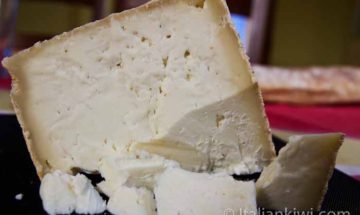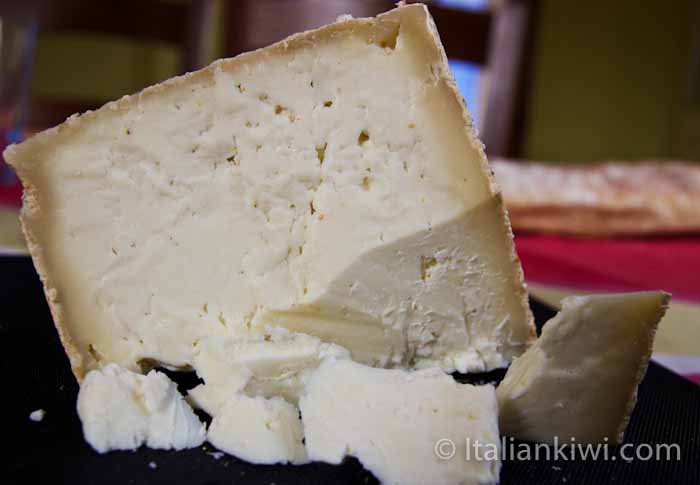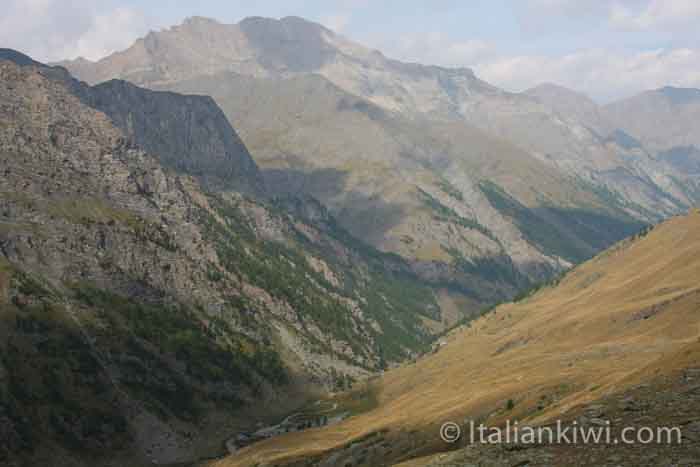Where does Castelmagno cheese come from?
Castelmagno is a very prized cheese that comes from the Province of Cuneo. The Valle Grana where the small village of Castelmagno is situated winds its way up into the alps that form the border between Italy and the South-East of France (where I live). My 80 year old neighbour comes from near this valley. He has told me that when he was a boy, he and his father used to walk through the mountain passes and into France to sell their produce.
How is Castelmagno made?
Castelmagno is made mainly of cow’s milk, but can have up to 20% made with sheep and goat milk. The first mention of the cheese is from a document that dates back to 1277, so it’s possible that it is even older than that! The cheese is made from unpasteurized milk. It is left to mature for at least 60 days. The colour of the crust can vary, depending on how long it has been aged for. The very aged Castelmagno will often have blue-green veins of bacteria running through it when it has been aged for 6 months or more. This is good to eat, so don’t cut it out!
It is crumbly and very tasty. In the region of Piedmont, Italy, it is used to make sauces for pasta, risotto and gnocchi, but not often eaten in pieces as it is so expensive (except by my kids when they can sneak some!). The cheese is expensive as it is produced in limited numbers each year. If you can get your hands on some outside of Piedmont, consider yourself very lucky!
By Lisa Watson


